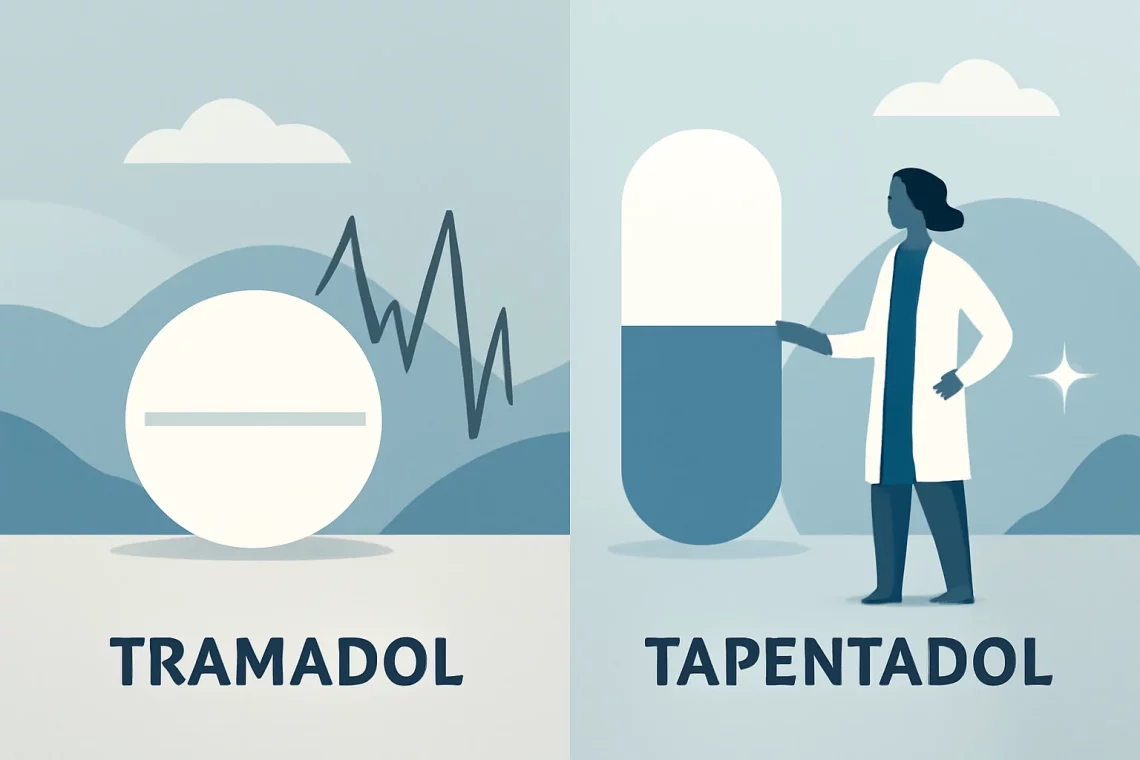
Tramadol vs Tapentadol: Key Differences in Pain Management Options
Tramadol and tapentadol are two medications commonly prescribed for the management of moderate to severe pain. Both drugs belong to a class of medications known as analgesics, but they differ in their chemical structure, mechanism of action, and side effect profiles. As pain management continues to be a critical aspect of healthcare, understanding the nuances between these two medications can help patients and healthcare providers make informed decisions. The rise in opioid prescriptions has sparked discussions regarding the safety and efficacy of various pain management options. Tramadol, often viewed as a less potent alternative to traditional opioids, has gained popularity due to its lower risk of addiction. Tapentadol, on the other hand, is a newer medication that combines dual-action mechanisms, targeting both pain receptors and the reuptake of norepinephrine. This article delves into the key differences and similarities between tramadol and tapentadol, helping to clarify their roles in pain management.
Understanding Tramadol
Tramadol is a synthetic opioid analgesic that works primarily by binding to the μ-opioid receptors in the brain, although it also inhibits the reuptake of norepinephrine and serotonin. This unique mechanism allows tramadol to provide pain relief while also potentially improving mood. Tramadol is frequently prescribed for conditions such as osteoarthritis, fibromyalgia, and post-surgical pain.
One of the notable advantages of tramadol is its relatively low potential for addiction compared to traditional opioids. This characteristic makes it a preferred option for many healthcare providers, especially when prescribing for patients who may be at risk of substance abuse. However, it is essential to recognize that tramadol can still lead to dependence and withdrawal symptoms, particularly when used long-term or in high doses.
Tramadol is available in various formulations, including immediate-release and extended-release tablets. The flexibility in dosing allows healthcare providers to tailor treatment plans to individual patient needs. Common side effects of tramadol include nausea, dizziness, and constipation. Although tramadol is generally well-tolerated, it can interact with other medications, particularly those that affect serotonin levels, leading to a potentially life-threatening condition known as serotonin syndrome.
Patients considering tramadol for pain management should engage in open discussions with their healthcare providers. These conversations should address not only the benefits but also the potential risks associated with tramadol use. In some cases, alternative pain management strategies may be more appropriate, depending on the patient’s medical history and the nature of their pain.
Exploring Tapentadol
Tapentadol is a relatively newer medication that possesses a dual mechanism of action, making it unique among analgesics. Like tramadol, tapentadol binds to μ-opioid receptors; however, its additional action on norepinephrine reuptake inhibition differentiates it from other opioids. This dual action not only enhances its efficacy in pain relief but also may contribute to a lower risk of some side effects typically associated with opioid medications.
Tapentadol is often prescribed for the management of various types of pain, including neuropathic pain and pain associated with conditions such as diabetic peripheral neuropathy and lower back pain. Its efficacy in treating these specific pain types has made it a valuable option for many patients.
One of the significant advantages of tapentadol is its lower incidence of gastrointestinal side effects, such as constipation, which are commonly experienced with traditional opioids. This aspect can greatly improve the quality of life for patients who may struggle with these side effects when using other pain medications.
Despite its benefits, tapentadol is not without risks. It also carries the potential for addiction and dependence, though many healthcare providers consider it safer than conventional opioids. Side effects can include nausea, dizziness, and fatigue, and like tramadol, tapentadol may interact with other medications, necessitating careful management by healthcare providers.
Patients considering tapentadol should have thorough discussions with their healthcare team to understand how this medication may fit into their overall pain management plan. The choice between tapentadol and other pain relief options will depend on the patient’s unique circumstances, including their pain type, medical history, and any previous experiences with pain medications.
Comparing Efficacy and Safety
When comparing tramadol and tapentadol, it’s essential to evaluate their efficacy and safety profiles. Both medications are effective for moderate to severe pain, but they may be better suited for different types of pain and patient populations.
Tramadol has been used for many years, and its long-standing presence means that a wealth of clinical data is available regarding its effectiveness and safety. It is particularly well regarded for its ability to treat chronic pain conditions, and many patients have reported positive results with its use. However, the risk of seizures, especially at higher doses or in patients with a history of seizures, is a critical consideration when prescribing tramadol.
Tapentadol, being newer, has emerged as a promising alternative, especially for patients experiencing neuropathic pain. Its dual-action mechanism not only targets pain receptors but may also address some underlying factors contributing to pain, such as mood disturbances. Clinical studies suggest that tapentadol may provide comparable pain relief to other opioids while demonstrating a lower risk of side effects like constipation.
In terms of safety, both medications require careful monitoring, particularly when prescribed alongside other drugs that can influence serotonin levels. The potential for addiction remains a concern for both tramadol and tapentadol, though many patients find that the risk is more manageable compared to traditional opioids.
Ultimately, the decision regarding which medication to use should be based on a comprehensive assessment of the patient’s specific situation, including their pain type, medical history, and personal preferences. Close collaboration between patients and healthcare providers is essential to ensure the most effective and safe pain management strategy.
Conclusion
In summary, tramadol and tapentadol are both valuable options for pain management, each with its unique benefits and risks. Tramadol has a long history of use and is often prescribed for a variety of pain conditions, while tapentadol offers a newer approach with its dual-action mechanism.
Patients should be aware of the potential side effects and risks associated with each medication, and it is crucial to have open and honest discussions with healthcare providers to determine the most appropriate treatment plan. Pain management is highly individual, and what works for one person may not work for another.
As always, this article does not constitute medical advice. Anyone experiencing health concerns should consult their healthcare provider for personalized recommendations and treatment options.




